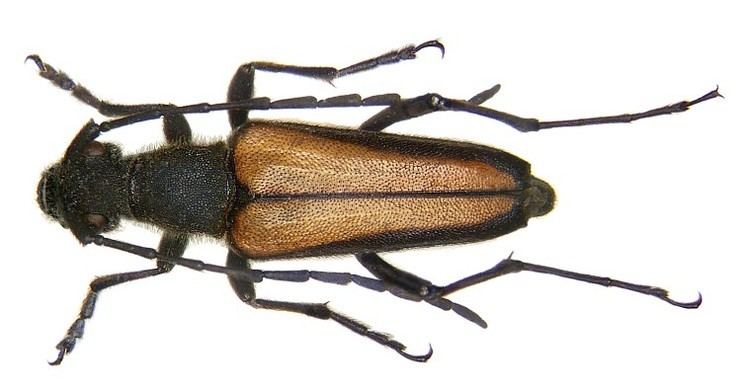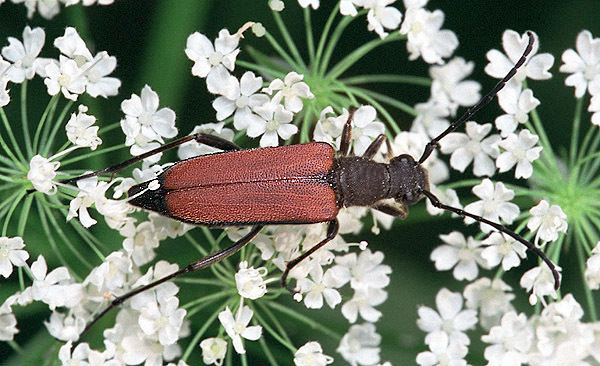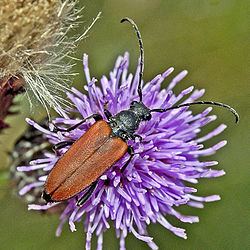Family 7Cerambycidae]] Order Beetle | Rank Species | |
 | ||
Similar Anastrangalia, Beetle, Anastrangalia sanguinolenta, Alosterna tabacicolor, Anoplodera sexguttata | ||
Anastrangalia dubia dubia tesa k
Anastrangalia dubia is a species of beetle from Cerambycidae family.
Contents
- Anastrangalia dubia dubia tesa k
- Schwarzges umter schmalbock anastrangalia dubia 2016
- Subspecies and varietas
- Description
- Biology
- Distribution
- References
Schwarzges umter schmalbock anastrangalia dubia 2016
Subspecies and varietas
Subspecies and varietas within this species include:

Description

Anastrangalia dubia can reach a length of 8–16 millimetres (0.31–0.63 in). The pronotum is narrow, bell-shaped, slightly hairy and considerably longer than wide. The elytrae are finely and uniformly punctured. Genders and variations of this species could have different colours. That way, the species can come as black, brown, or red coloured. Usually head, antennae, pronotum and legs are black. In the males the elytrae may be yellow-brown with a dark elytral suture and a more or less broad dark elytral edge, while in the females they are reddish-brown with or without blackish edges. Completely black specimens are more common in females, while in the males they are quite rare. Similar species are Anastrangalia reyi and Anastrangalia sanguinolenta. In A. dubia on the head the angles of the cheeks are acute, while in A. reyi they are obtuse.
Biology

Larvae of these of wood-boring beetles feed on dead wood, dead branches and tree stumps of various deciduous and coniferous trees (mainly fir, pine and spruce). The development requires two to three years. The adults fly from May to August.
Distribution
This species can be found in montane and subalpine areas everywhere in Europe (except for Estonia). These betles can also be found in African and Asian countries such as Algeria, Caucasus, North Iran, and Turkey.
